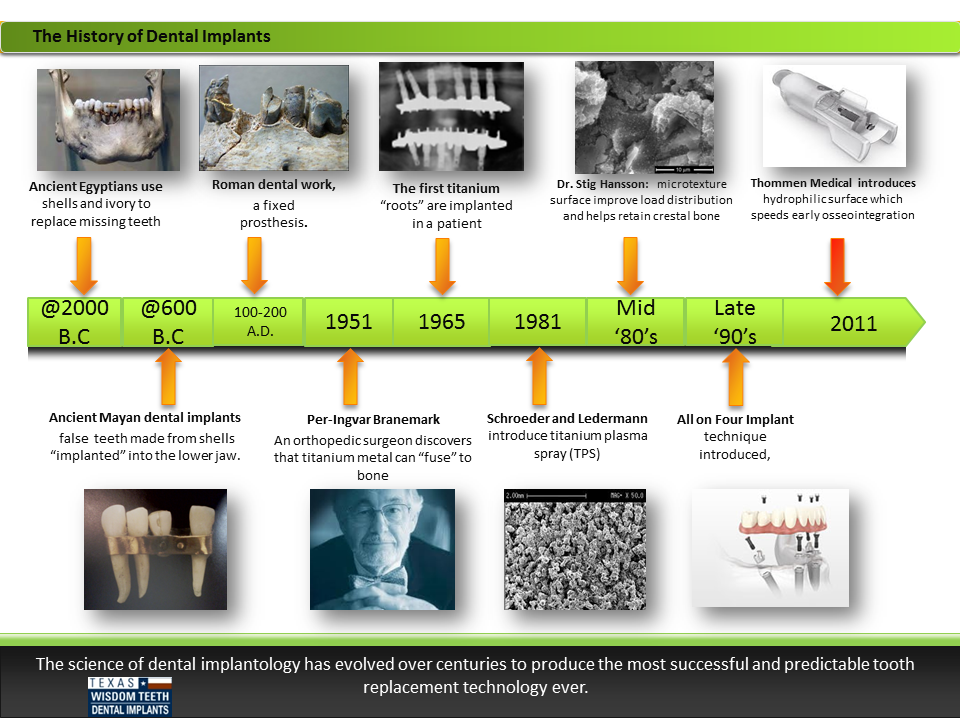
The History of Dental Implants
With all of the interest in dental implants these days, it’s easy to think that implants are something new or even experimental. Nothing could be farther than the truth, however. Dental implants may be one of the oldest concepts in dental history. Modern day research begins in 1951 with Dr. Per-Ingvar Branemark, an orthopedic surgeon. Dr. Branemark was the first to discover that titanium is the only biocompatible metal which bone actually interacts with. The very first titanium “roots” were implanted into the jaw of a human patient by Dr. Branemark in 1965.
The very first dental implants discovered were engineered by the ancient Mayans and belonged to a young woman about 600 B.C. who was missing 3 lower anterior teeth. The ancients crafted false teeth from pieces of shell and inserted them into the sockets of the missing teeth. Ancient Egyptians also practiced advanced dentistry and implanted similar prostheses bonded with gold wire into the jaws of pharaohs. Even the Romans had their own version of permanent replacement of missing teeth.
The history of modern implant dentistry has evolved over recent decades with the first major advancement beyond the use of titanium in 1981 when German scientists, Dr.’s Schroeder and Ledermann showed that titanium plasma spray coatings improved osseointegration (the process of the bone tissue healing to the surface of the implant). By the mid 1980’s Dr Stig Hanssen advanced the preservation of crestal bone with microtexture.
By the 1990’s dental implants had become an extremely successful and predictable method of tooth replacement. Success rates became higher than 90% and implantologists began looking for ways to reduce the 6 month inactive healing period between implant placement and implant loading. In the late 1990’s Nobel Biocare introduced the “All- on- Four” system which allowed for three benefits: the use of only four implants to replace a full arch, reduction in the necessity for extensive bone grafting and reduced inactive healing time. This technique became extremely popular and is still used today. In 2011, Thommen Medical introduced the first measurable advancement in early osseointegration with their Inicell application system. The Thommen system utilizes a hydrophilic liquid to coat the implant just prior to insertion. The solution draws blood cells toward the surface of the implant and has been shown to increase the rate of early osseointegration within the first 4 weeks of healing.
Today, dental implants are the most predictable and successful form of permanent tooth replacement available. Enjoying a 97% success rate for over 40 years, patients can have confidence that their dental implants have come a long way from the ancient Mayans.

